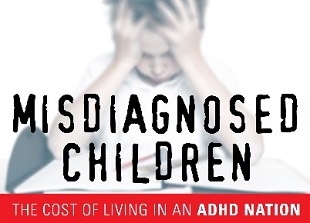
There are a number of vision issues not tested for in a basic eye examination that can create identical symptoms to “ADHD”. These well-recognized symptoms, often automatically assumed to be ADHD, are in all probability, from vision problems that we can treat:
- Hyperactivity
- Impulsiveness
- Short attention span
- Fidgety
- Easily distractible
The book “ADHD Does Not Exist” by neurologist Richard Saul was recently published to educate the public about the many other causes for the symptoms known as ADHD. After many years of treating patients presenting with this collection of symptoms, Dr. Saul found that with persistence, he could always find another reason for the symptoms. From sugar and caffeine usage to sleep interruptions, to the very common area of undiagnosed visual problems, the doctor was routinely able to prove the symptoms were caused by something other than ADHD. By getting to the root of the problem, he helped his patients avoid unnecessary drugs and the incorrect label of ADHD.
Since most of the visual problems which generate ADHD-like symptoms cannot be discovered in a basic exam, these symptoms go untreated, sometimes for a lifetime. People with 20/20 eyesight can see 20 feet away, but may have near vision deficiencies that make sitting still for reading or schoolwork very difficult and uncomfortable. Behavioral optometrists are trained to evaluate all 17 skills needed for near work, not just one or two. If these skills are not up to par, they can create the symptoms mistaken for ADHD.
Last year, we worked with six children who were told they had ADHD, when instead they had vision problems we treated and improved with vision therapy. This year, we have already seen more cases than that. These numbers will increase with public awareness and acceptance of other possibilities for ADHD symptoms.
Some of the more common vision problems that can produce the same symptoms as those diagnosed for ADHD include:
Convergence Insufficiency (CI)
- Affects about 20% of the population
- Trouble converging the eyes together for near work such as reading and homework
- Causes discomfort when doing near work, and the patient can usually only concentrate for a short time before becoming fidgety
- A high number of patients diagnosed with ADHD actually have CI instead, which is treatable with vision therapy.
Tunnel Vision
- Restricted peripheral or “side” vision
- When reading, someone with tunnel vision can focus only on one word at a time and cannot scan ahead to the next word or track across the page.
- Near work such as reading and homework is frustrating, time-consuming and often leads to inattentiveness and hyperactivity.
- Studies have proven there is a high incidence of tunnel vision in persons diagnosed with ADHD.
- In most cases, vision therapy can widen the field of vision.
Focusing – Eye Teamwork – and Tracking Disorders
- Many people unknowingly have these problems and subconsciously compensate.
- Any one or all of them together will produce symptoms that are mistaken for ADHD.
- Trouble focusing causes a child to become agitated and avoid near work.
- Poor eye teaming forces one eye to do most of the work, and it becomes overwhelming for the child.
- Tracking disorders react much the same way as tunnel vision above.
If your child has any “ADHD-like symptoms”, run don’t walk to the nearest behavioral optometrist. Since vision problems are all too often the real culprit, we can help you avoid the medications and stigma attached to an ADHD misdiagnosis. If we diagnose your child with a vision problem, we offer several options for treatment, from performance-enhancing glasses to vision therapy and colored light therapy.

For more information on the book “ADHD Does Not Exist”, click here to see the NY Post article.
With proper diagnosis and treatment, your child does not have to be wrongly labeled and treated for ADHD. There are many other explanations for the symptoms. Vision problems are our specialty. Please let us help.